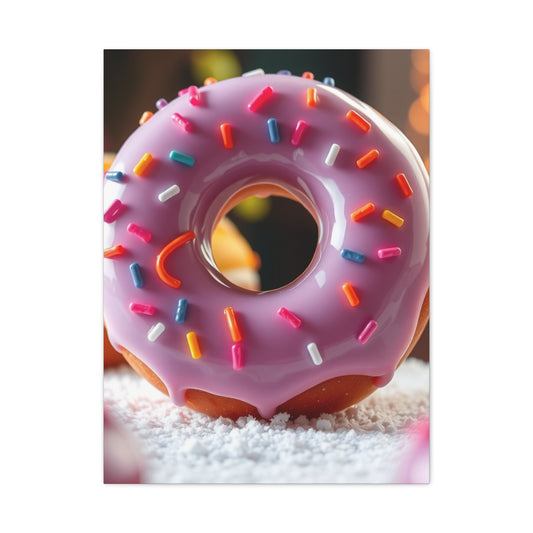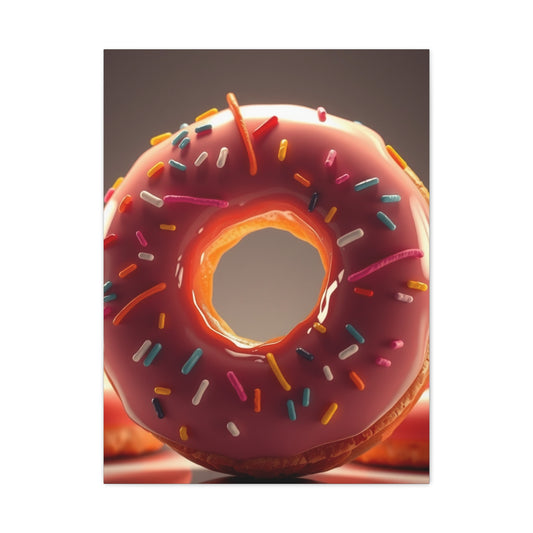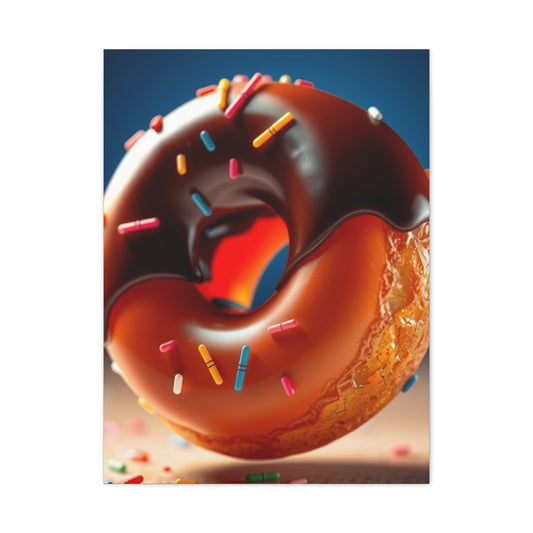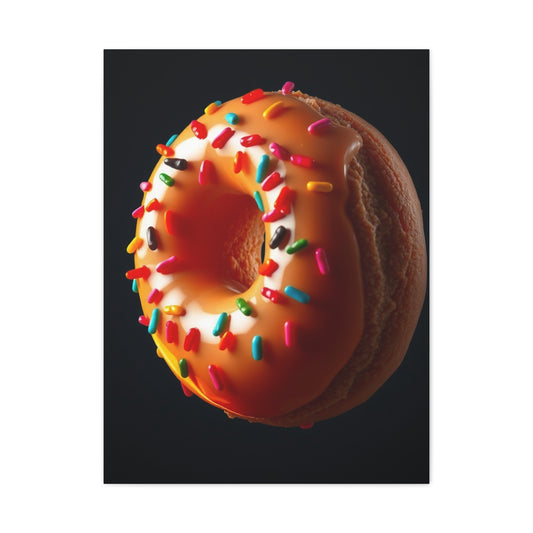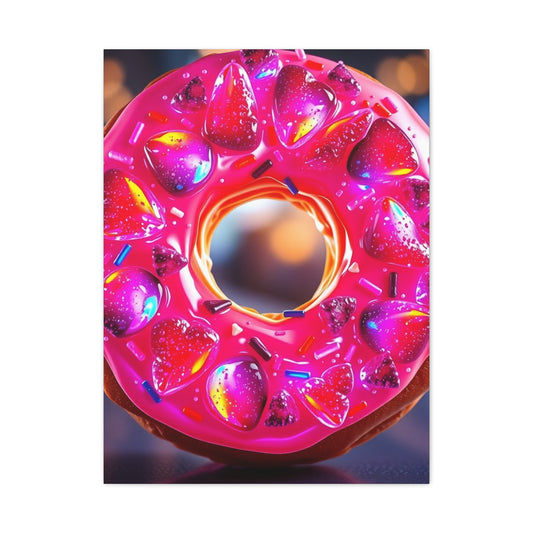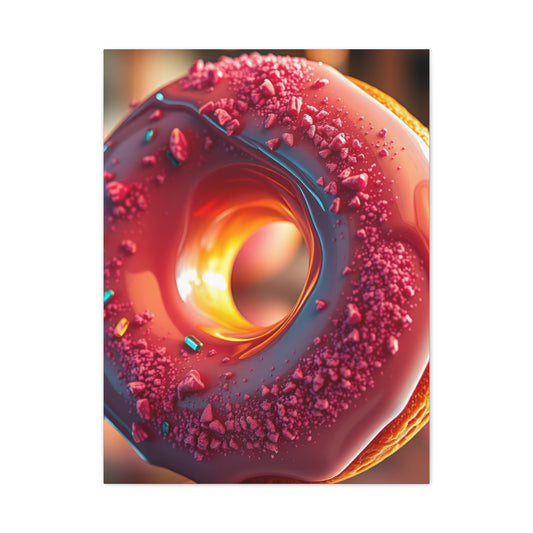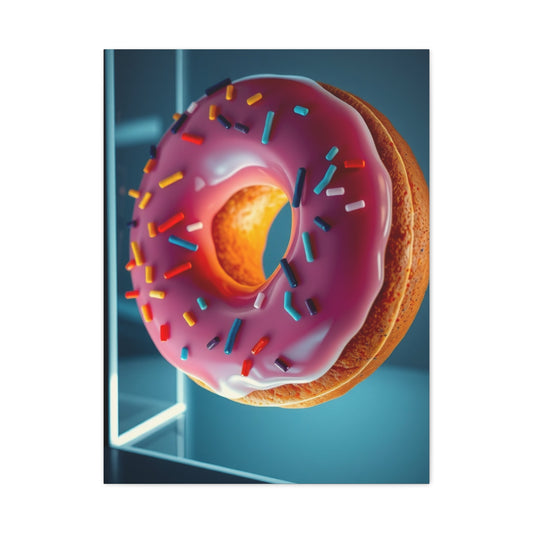The Ultimate Guide to Stunning Donut Wall Art
At any gathering, a striking centrepiece can elevate the ambiance and leave a lasting impression on guests. In recent years, the concept of a donut wall has emerged as a modern and whimsical way to merge aesthetics with indulgence. Unlike traditional dessert displays, a donut wall is both functional and decorative, offering a vertical presentation of donuts that transforms a simple treat into an engaging visual experience. This creative setup is not merely about stacking pastries; it requires careful planning, artistic consideration, and an understanding of the factors that influence freshness and presentation.
A donut wall can be tailored to suit a vast array of events, ranging from formal weddings to casual birthday parties or corporate celebrations. The appeal lies in its versatility: it can serve as a focal point, a conversation starter, or a playful addition to a dessert table. The concept is deceptively simple but implementing it effectively demands attention to detail, from choosing the ideal location to selecting the right types of donuts and arranging them in a manner that captivates both the eye and the palate.
Understanding the Concept of a Donut Wall
A donut wall is, at its essence, a vertical arrangement of donuts displayed on pegs, hooks, or small shelves affixed to a panel. This panel can be crafted from a variety of materials, including wood, acrylic, or even metal, and its design can be customized to align with the theme of an event. Unlike a traditional dessert platter, a donut wall elevates the treats, literally and figuratively, creating a three-dimensional presentation that encourages interaction and engagement.
One of the key features of a donut wall is its dual function: it is both a decorative installation and a self-service treat station. Guests are naturally drawn to its visual appeal, and its accessibility allows them to select their own donuts without requiring a host or server. The aesthetic possibilities are virtually limitless; donuts can be arranged in geometric patterns, cascading designs, or color-coordinated displays, each choice adding a layer of sophistication and charm. The vertical nature of the setup also makes it space-efficient, ideal for venues where floor space is at a premium.
Events That Benefit from a Donut Wall
The versatility of donut walls makes them suitable for a wide spectrum of events. Each type of occasion benefits from the combination of visual delight and culinary satisfaction that this display provides.
Weddings
In contemporary weddings, couples often seek alternatives to the traditional wedding cake. A donut wall offers a trendy and interactive option that appeals to guests of all ages. Donuts can be customized with glazes, toppings, and fillings that align with the wedding colors or theme, making the display both elegant and personalized. Beyond aesthetics, it provides a communal experience, encouraging guests to gather, select their treats, and mingle, which adds to the celebratory atmosphere.
Corporate Events
Corporate gatherings benefit from elements that break the monotony of conventional meeting formats. A donut wall introduces a playful and creative component to events, serving as both a dessert station and an icebreaker. Employees and attendees are drawn to the display, naturally encouraging social interaction and creating memorable moments during coffee breaks or networking sessions. The novelty of a donut wall can also enhance the perceived sophistication of the event, showing attention to detail and a commitment to creating a pleasant experience.
Birthday Parties
Children and adults alike are captivated by the spectacle of a donut wall. For birthdays, this type of dessert presentation adds color, excitement, and a sense of indulgence. Donuts can be decorated in themes that match the party, such as cartoon characters, favourite colours, or seasonal motifs. The interactive nature of the wall allows guests to select their preferred flavors, ensuring everyone finds something they enjoy while contributing to a dynamic, festive environment.
Baby Showers and Graduations
Milestone events, such as baby showers and graduations, are enhanced by treats that reflect the celebratory spirit. A donut wall in these settings adds a sweet, playful touch that complements the joy of the occasion. The visual arrangement can be customized to echo symbols associated with the event, such as pastel colors for a baby shower or school colors for a graduation. By combining beauty with taste, the display becomes a conversation starter and a cherished part of the memory of the event.
Overcoming Challenges in Donut Wall Planning
Despite its appeal, creating a successful donut wall is not without challenges. Understanding potential pitfalls and proactively addressing them ensures that the wall remains visually appealing and the donuts remain fresh and enticing throughout the event.
Temperature Sensitivity
One of the most common concerns for donut walls, especially at outdoor or summer events, is temperature control. Heat can cause glazes to melt, sprinkles to slide off, and donuts to become dry or lose their optimal texture. Planning for a shaded or climate-controlled environment is crucial to maintain the integrity of the display. Even indoors, proximity to heat sources such as windows, ovens, or radiators can negatively impact the donuts, underscoring the need for careful positioning.
Guest Hesitation
A visually striking donut wall may be so artful that guests hesitate to interact with it. Some may perceive it as purely decorative, leading to untouched donuts despite their appeal. Including subtle cues, such as a small sign or an inviting arrangement, can alleviate uncertainty and encourage guests to partake without hesitation. This approach ensures that the wall fulfills its dual purpose of decoration and indulgence.
Maintaining Freshness
Freshness is paramount in creating a successful donut wall. Stale donuts undermine the visual and culinary appeal of the display. Ensuring that the donuts are freshly made or sourced close to the event time, combined with proper storage and handling, maintains both taste and appearance. Selecting high-quality donuts with textures that hold up under ambient conditions also contributes to a successful presentation.
Structural Stability
A donut wall’s design must account for the weight of multiple donuts and the possibility of guests reaching for treats. The panel or frame should be sturdy, with securely affixed pegs or hooks capable of supporting the donuts without tipping or collapsing. Stability considerations are critical, particularly for high-traffic events, to prevent accidents and maintain a polished appearance throughout the gathering.
Selecting the Perfect Location
The positioning of a donut wall can significantly impact both its effectiveness and its longevity. Thoughtful placement ensures optimal interaction, preserves freshness, and enhances the overall event aesthetic.
Outdoor Events
When planning an outdoor event, selecting a shaded area protected from direct sunlight is essential. Excessive heat not only affects the appearance of glazes and toppings but can also alter the texture and taste of the donuts. Placing the wall near a canopy, under a tent, or adjacent to a natural shade source such as a tree provides protection while maintaining visibility. It is also advisable to consider factors such as wind or humidity, which may influence the stability of the display or the quality of the treats.
Indoor Events
For indoor gatherings, situating the donut wall away from heat-emitting appliances, direct sunlight, and high-traffic areas helps preserve the donuts’ integrity. Ensuring sufficient lighting allows the wall to be a focal point, drawing guests’ attention and encouraging interaction. Additionally, positioning the wall near other dessert offerings or beverage stations can integrate it naturally into the event’s flow, promoting a seamless experience for attendees.
Accessibility Considerations
A donut wall should be accessible from multiple angles, allowing guests to select treats without crowding or difficulty. Height considerations are important, particularly for events with children or individuals of varying mobility levels. Ensuring that all guests can comfortably reach the donuts contributes to a positive experience and reinforces the wall’s role as both a visual centerpiece and a functional station.
Choosing Donuts That Impress
The selection of donuts plays a pivotal role in the success of a donut wall. Beyond aesthetic appeal, factors such as flavor variety, size, and durability influence both guest satisfaction and presentation quality.
Variety and Customization
Offering a range of flavors ensures that the display caters to diverse tastes. Classic flavour's such as chocolate, vanilla, or glazed can be complemented by more adventurous options like fruit-filled, caramel-drizzled, or spiced varieties. Customization also extends to toppings, colors, and patterns, allowing the donuts to align with the event’s theme or color scheme. A thoughtful combination of flavors and designs enhances the visual richness of the wall while appealing to a wide spectrum of palates.
Size and Shape Considerations
The size and shape of the donuts affect both presentation and handling. Mini or medium-sized donuts are often preferred for walls, as they are easier for guests to pick up and allow for more creative arrangements. Specialty shapes, such as heart-shaped or themed molds, can add a unique touch, further elevating the visual impact of the wall. Balancing aesthetic appeal with practicality ensures a functional and eye-catching display.
Quality and Durability
Donuts selected for a wall must maintain their structure throughout the event. Soft, delicate pastries may collapse or lose toppings if not handled properly, while sturdier options provide reliability without sacrificing taste. Prioritizing quality ingredients and preparation methods ensures that the donuts retain their flavor, texture, and visual appeal, contributing to a successful and memorable centerpiece.
Inviting Guests to Enjoy the Wall
A donut wall is most effective when guests understand it is intended for interaction. Clear, friendly cues encourage participation and maximize the wall’s impact.
Signage and Communication
Including a sign that invites guests to take a donut eliminates hesitation and enhances the overall experience. Messages such as “Take One” or “Help Yourself” subtly communicate the interactive nature of the display. Creative phrasing or playful designs can further align the signage with the event’s theme, making the wall both approachable and aesthetically integrated.
Placement of Serving Utensils
Although donuts are typically grabbed by hand, providing small tongs or napkins nearby can promote hygiene and ease of access, especially at larger events. Thoughtful placement of these items ensures guests can enjoy the treats comfortably while preserving the display’s organization and cleanliness.
Advanced Design Strategies for Donut Walls
Creating a donut wall that leaves a lasting impression involves more than just arranging pastries on pegs. A well-executed wall balances aesthetics, accessibility, and functionality, transforming ordinary donuts into a visual and gastronomic delight. Advanced design strategies consider factors such as color harmony, symmetry, patterning, and thematic alignment, all of which contribute to a cohesive and captivating centerpiece.
When approaching the design of a donut wall, it is important to consider the overall ambiance of the event. A formal wedding might benefit from a minimalist, monochromatic layout, while a birthday celebration could embrace vibrant colors and whimsical arrangements. The structural layout, spacing, and selection of donuts play an integral role in achieving a professional and polished appearance.
Planning Your Donut Wall Layout
The first step in creating a visually striking wall is to conceptualize the layout. Careful planning ensures that the final display is balanced, engaging, and functional.
Symmetry and Balance
Symmetry is a powerful design tool that provides visual stability and elegance. Arranging donuts in symmetrical rows or mirrored patterns can create a sense of order and sophistication, particularly for formal occasions. Conversely, deliberately asymmetrical designs can convey a playful, organic feel that complements casual or whimsical events. Understanding the mood you wish to convey is crucial in determining whether symmetry or asymmetry best suits your donut wall.
Pattern and Color Coordination
Color coordination is one of the most effective ways to enhance visual appeal. Coordinating donut glazes, sprinkles, and toppings with the event’s color palette creates cohesion and harmony. Patterns, such as alternating colors, gradients, or clustered arrangements, add depth and intrigue. A gradient effect, for instance, can give the illusion of movement across the wall, while clusters of complementary colors can draw attention to focal points within the display.
Thematic Integration
Thematic integration ensures that the donut wall feels intentional rather than an isolated decorative element. For example, a tropical-themed event could feature donuts with bright, fruity glazes, edible flowers, or citrus zest toppings arranged to mimic the colors of a sunset. For a winter celebration, a wall might incorporate white chocolate drizzles, powdered sugar, and silver sprinkles to evoke frost and snow. The key is to align every aspect of the display with the overarching event theme.
Choosing Materials for Your Donut Wall
The material used for constructing the wall not only affects aesthetics but also impacts durability, stability, and ease of assembly.
Wood and Acrylic Panels
Wood is a classic choice for donut walls due to its sturdiness and natural texture. Wooden panels can be painted, stained, or left raw to match different event styles. Acrylic panels, on the other hand, provide a sleek, modern look with transparency that allows the donuts to appear as if they are floating. Both materials support customization through engraving, stenciling, or painting, enabling intricate designs that complement the event’s décor.
Pegs, Hooks, and Shelves
The method of holding donuts in place is equally important. Wooden pegs are traditional and functional, providing a rustic charm. Acrylic hooks or shelves offer a contemporary alternative that highlights the donuts themselves without distracting from their appearance. The spacing and length of pegs or hooks should accommodate the size and shape of the donuts, ensuring that each treat is easily accessible while maintaining structural integrity.
Durability and Safety Considerations
Regardless of material choice, stability and safety are paramount. The panel must support the combined weight of all the donuts, withstand the occasional tug from guests, and resist tipping. Reinforcements, such as brackets, angled supports, or a weighted base, are essential for larger walls or high-traffic events. Ensuring the wall is secure enhances the overall experience and prevents accidents.
Enhancing Visual Appeal with Creative Arrangements
Beyond material and structural considerations, creative arrangements elevate a donut wall from functional to extraordinary.
Layered Displays
Layering donuts at varying heights adds dimension and depth to the display. Rather than lining all donuts in a flat grid, staggering placements or incorporating small ledges creates a sense of movement. This approach draws the eye across the wall, encouraging guests to explore different areas and increasing the visual engagement of the display.
Incorporating Edible Decorations
Edible embellishments, such as chocolate drizzles, crushed nuts, sprinkles, fruit garnishes, or edible flowers, can enhance both flavor and visual interest. These accents allow for more intricate designs and can be tailored to suit the event theme. For instance, a rustic wedding might feature donuts adorned with caramel drizzle and candied nuts, while a baby shower could incorporate pastel-colored icing and tiny edible stars.
Using Negative Space
Negative space—the deliberate use of empty areas within the design—prevents the wall from appearing cluttered or overwhelming. Allowing gaps between clusters of donuts emphasizes individual treats and highlights design elements such as patterns, shapes, or color gradients. Negative space also facilitates easier access for guests, preventing congestion and accidental disruption of the display.
Optimizing Donut Freshness
No matter how visually stunning a donut wall is, its success depends on the quality and freshness of the donuts. Several strategies ensure that the display remains appealing and tasty throughout the event.
Timing and Sourcing
Donuts should be sourced or baked as close to the event time as possible. This preserves flavor, texture, and visual integrity. Partnering with skilled bakers who understand the requirements for a display-oriented donut wall can make a significant difference. Freshly prepared donuts are less prone to drying, glazing issues, or flavor degradation, ensuring a consistent and enjoyable experience for guests.
Temperature Control
Maintaining an optimal environment prevents donuts from deteriorating prematurely. Shaded or climate-controlled locations are ideal, and avoiding heat sources or direct sunlight preserves glaze, icing, and toppings. For outdoor summer events, cooling strategies such as fans, tents, or temporary shelters can prevent melting and maintain a crisp exterior while keeping the interiors soft and flavorful.
Protective Handling
When assembling the wall, careful handling minimizes damage. Gloves or clean utensils prevent smudging glazes, crushing delicate toppings, or leaving fingerprints. Donuts should be placed gently onto pegs or hooks, and any accidental imperfections can be corrected before the event begins, ensuring a flawless presentation.
Accessibility and Guest Engagement
A donut wall succeeds when guests are drawn to it and can easily access the treats. Design choices should balance aesthetic appeal with functional accessibility.
Height and Reach Considerations
Height is critical to ensure that guests of varying ages and mobility levels can reach the donuts comfortably. Children-friendly walls may incorporate lower tiers, while taller arrangements can create dramatic visual impact for adult-focused events. Designing multiple tiers ensures that all guests can participate without difficulty.
Hygiene and Convenience
Although donuts are typically hand-held, providing napkins, small tongs, or disposable gloves can enhance hygiene and convenience. These small details contribute to a positive experience, especially in large gatherings where many guests interact with the wall. Placement of these items in a nearby, accessible location keeps the display organized and encourages responsible handling.
Encouraging Interaction
Subtle cues, such as inviting signage, playful arrows, or thematic decorations pointing toward the donuts, can encourage interaction. The visual allure of the wall naturally draws attention, but thoughtful enhancements maximize guest engagement. Creative touches, such as edible glitter, interactive flavor choices, or mini-labels identifying each type of donut, add layers of engagement that transform the display into an experience rather than a simple dessert station.
Catering to Diverse Palates
A successful donut wall caters to a range of tastes and dietary preferences, ensuring all guests feel included and satisfied.
Flavor Variety
Offering a spectrum of flavors, from traditional chocolate and vanilla to fruit-filled, caramel-drizzled, or spiced varieties, ensures that every guest finds something appealing. Seasonal flavors, such as pumpkin spice, lemon zest, or berry compote, can tie the display to the time of year and enhance the thematic experience.
Dietary Considerations
Incorporating options for dietary restrictions, such as gluten-free, vegan, or low-sugar donuts, broadens accessibility. Clear labeling helps guests make informed choices while maintaining the visual appeal of the wall. Thoughtful consideration of dietary needs reflects a host’s attention to detail and commitment to guest satisfaction.
Size and Portion Control
Mini or medium-sized donuts allow guests to sample multiple flavors without feeling overwhelmed. Smaller sizes also enable a more elaborate arrangement, adding depth and complexity to the display. The combination of portion control, variety, and aesthetic planning ensures that the wall is both practical and visually captivating.
Creating a Memorable Experience
Beyond design, freshness, and accessibility, a donut wall is an opportunity to create a memorable experience that resonates with guests long after the event concludes.
Interactive Elements
Interactive elements, such as a “build-your-own topping” section or themed props for photo opportunities, encourage engagement and make the display more dynamic. Guests enjoy personalizing their treats or capturing memories in front of the visually striking wall, enhancing the overall impact of the event.
Cohesion with Event Aesthetic
Integrating the wall seamlessly with the event’s overall aesthetic enhances its contribution to the ambiance. Coordinating colors, textures, and decorations ensures that the display feels intentional and harmonious. A cohesive approach elevates the wall from a standalone element to a vital component of the event experience.
Visual Storytelling
A donut wall can tell a story, whether through the arrangement of flavors, colors, or decorative elements. For example, a seasonal display might progress from spring pastels to vibrant summer tones, while a wedding wall could reflect the couple’s journey through symbolic colors or shapes. Storytelling through design adds depth and emotional resonance, making the display more memorable for guests.
Logistical Planning for a Donut Wall
While design and aesthetics are essential, the success of a donut wall also hinges on meticulous logistical planning. Proper preparation ensures that the display is not only visually stunning but also practical, accessible, and resilient throughout the duration of an event. A well-thought-out approach to logistics balances transportation, setup, timing, and guest interaction, preventing common pitfalls such as collapsed pegs, stale donuts, or congestion around the wall.
The logistics of a donut wall begin with understanding the venue, estimating guest count, and coordinating with bakers or suppliers. It is a combination of spatial planning, resource management, and attention to detail that elevates the display from ordinary to memorable.
Assessing Venue Space
The first step in logistical planning is evaluating the venue. The physical location of the wall influences its size, design, accessibility, and even the types of donuts suitable for display.
Spatial Considerations
Measure the available floor space and identify an area that allows for easy traffic flow. Guests should be able to approach the wall from multiple angles without causing congestion. For smaller venues, vertical arrangements may be preferred to maximize space efficiency. Large venues provide the opportunity for elaborate designs, multi-tiered arrangements, or even dual walls for increased variety.
Lighting and Visibility
Optimal lighting enhances both the visual appeal of the wall and the guest experience. Natural light highlights glazes and toppings, while soft ambient lighting can create a warm and inviting atmosphere. Positioning the wall near light sources without exposing donuts to direct sunlight is ideal, ensuring the display remains attractive and the treats retain their texture and freshness.
Environmental Factors
Consider factors such as temperature, humidity, and wind if the event is outdoors. High humidity can soften donut surfaces, while wind can dislodge lightweight decorations or topple pegs. Incorporating protective elements such as tents, fans, or enclosures helps maintain the integrity of the display. Temperature-controlled indoor venues simplify freshness management, but proximity to heat sources or direct sunlight should still be avoided.
Transporting the Donuts
Transportation is a critical aspect of donut wall logistics. Donuts are delicate and can easily be damaged if not handled properly.
Packaging and Protection
Use sturdy boxes with dividers to prevent donuts from shifting during transit. Layering with parchment paper or soft padding helps maintain shape and toppings. For larger orders, consider multiple smaller boxes rather than one oversized container to reduce the risk of crushing.
Timing and Delivery
Coordinate delivery or pickup close to the event time to ensure freshness. Early delivery may require controlled storage conditions, such as refrigeration, to maintain quality. If the wall is being assembled on-site, ensure that donuts are handled minimally to avoid smudging glazes or displacing toppings.
Transporting the Wall Structure
Panels, pegs, and hooks should be disassembled, cushioned, and transported securely. Wooden and acrylic components are prone to scratches or chips, so wrapping in protective materials and securing them in vehicles prevents damage. Planning the order of assembly on-site also reduces confusion and expedites setup.
On-Site Setup
The on-site assembly of a donut wall requires precision, patience, and an organized approach. Proper setup guarantees structural stability and visual appeal while preventing unnecessary stress during the event.
Assembling the Frame
Begin with the panel or wall frame, ensuring it is level and firmly positioned. Reinforce with brackets, weights, or angled supports if necessary. Stability is paramount, particularly in high-traffic areas or for taller walls, as even a minor imbalance can cause accidents or damage.
Installing Pegs or Hooks
Attach pegs or hooks systematically, maintaining consistent spacing to accommodate donuts evenly. Ensure that each peg is fully secured and capable of supporting the weight of a donut without bending or detaching. Testing a few sample placements prior to arranging all donuts can help identify potential issues before full assembly.
Arranging Donuts
Begin arranging donuts in the planned design, starting from a central focal point or bottom row, depending on preference. Staggering layers or creating patterns enhances visual interest and prevents overcrowding. Take care when placing delicate or heavily decorated donuts to avoid smudging or dislodging toppings.
Maintaining Freshness Throughout the Event
Even with careful sourcing and transport, donuts can lose their optimal texture and flavor over time. Implementing strategies to maintain freshness ensures the wall remains appealing from start to finish.
Temperature and Humidity Control
Monitor ambient conditions, especially in outdoor settings. Shade, tents, or fans help regulate temperature, while humidity can be mitigated through air circulation and protective coverings. Indoors, keeping the wall away from heat sources and direct sunlight prevents glazing from melting and toppings from sliding.
Rotating Donuts
For events spanning several hours, consider a rotation system where fresh donuts are swapped in as older ones are consumed. This keeps the display visually full and ensures all treats are enjoyed at peak freshness. Maintaining a small reserve of extra donuts in appropriate storage allows for seamless replenishment without disrupting the wall.
Protective Coverings
Transparent shields or small enclosures can protect donuts from airborne particles, insects, or accidental touches while maintaining visibility. These coverings are particularly useful for outdoor events or venues with high foot traffic.
Guest Flow and Interaction
Managing guest flow is critical to avoid congestion, maintain hygiene, and ensure a positive experience around the donut wall.
Creating an Inviting Setup
Position the wall in a central or prominent area, with clear signage that invites guests to take a donut. Messages such as “Help Yourself” or “Grab a Treat” reduce hesitation and make the interactive nature of the wall obvious. The placement of napkins, tongs, or disposable gloves nearby encourages hygienic handling.
Encouraging Smooth Traffic
Provide enough space around the wall for guests to gather without blocking other areas of the event. For larger events, consider multiple access points or duplicating smaller walls in different locations to disperse crowds. Strategic placement ensures that everyone can enjoy the display without stress or inconvenience.
Engaging Guests
Incorporate visual or interactive cues that make the experience more engaging. Using small labels to indicate flavors, highlighting seasonal or special donuts, or including a mini topping station adds an element of discovery. Guests are more likely to engage fully when the wall offers both visual delight and an interactive experience.
Troubleshooting Common Issues
Even with careful planning, unexpected challenges can arise. Preparing for these issues prevents disruption and maintains the display’s appeal.
Collapsed Pegs or Hooks
Check the weight-bearing capacity of all supports before arranging donuts. Reinforce weak points with additional brackets or supports, and test the wall by gently applying pressure. Having extra pegs or hooks on hand allows for quick replacement if a component fails.
Uneven Distribution
As guests select donuts, the visual balance of the wall may shift. Periodically reassess the arrangement and adjust placement to maintain aesthetic appeal. Small corrections during quieter moments prevent the wall from looking sparse or unkempt.
Donuts Losing Freshness
Keep backup donuts in a controlled environment for replenishment. Swap in fresh treats before older donuts become stale, ensuring a consistently high-quality experience. Labeling and organizing reserves by flavor facilitates quick and efficient replacements.
Seasonal and Thematic Considerations
Donut walls can be adapted to reflect seasons, holidays, or specific event themes, enhancing their memorability.
Seasonal Flavors and Toppings
Incorporating seasonal ingredients, such as pumpkin spice in autumn, citrus in summer, or berry compotes in spring, adds relevance and excitement. Seasonal decorations, such as edible flowers, chocolate leaves, or colored glazes, further reinforce the theme.
Holiday-Themed Walls
For holidays, custom glazes, sprinkles, or decorative toppers can transform a standard donut wall into a festive display. For example, red and green glazes with gold accents for Christmas, pastel hues for Easter, or heart-shaped donuts for Valentine’s Day provide a playful and celebratory atmosphere.
Coordinating with Event Decor
Aligning the wall with other visual elements of the event creates cohesion. Matching color schemes, decorative motifs, or textures ensures the wall feels integrated rather than isolated. Cohesion enhances the overall guest experience, making the display a seamless part of the celebration.
Final Touches for a Polished Donut Wall
The finishing details elevate a donut wall from functional to extraordinary, leaving a lasting impression on guests.
Signage and Labels
Clear and aesthetically pleasing signage helps guests navigate the display and enhances interaction. Flavor labels, decorative signs, or playful messaging adds both clarity and personality, contributing to the overall thematic experience.
Additional Decorative Elements
Adding small decorative touches, such as miniature flowers, ribbons, or subtle lighting, can enhance the presentation without overshadowing the donuts themselves. These accents provide depth and visual interest, creating a polished and memorable display.
Continuous Monitoring
Throughout the event, periodically check the wall for stability, freshness, and visual balance. Adjust placements, replenish donuts, and ensure that the display remains as engaging as when it was first assembled. Continuous monitoring guarantees that the wall remains a highlight from start to finish.
Elevating Your Donut Wall with Creative Customization
A donut wall is more than a simple dessert display; it is an opportunity to create a memorable centerpiece that engages guests visually, gastronomically, and emotionally. Creative customization transforms a standard wall of donuts into a unique experience that reflects the personality, theme, or story of the event. By combining thoughtful design, playful innovation, and attention to detail, hosts can craft a display that is both aesthetically captivating and irresistible to taste buds.
Customization encompasses a range of elements, including color schemes, flavor selections, patterns, decorations, and thematic integrations. These elements allow for a cohesive presentation that enhances the overall ambiance of the event and ensures that the donut wall is remembered long after the celebration ends.
Designing for Thematic Cohesion
A donut wall achieves maximum impact when it aligns with the broader theme of an event. Cohesion ensures that the wall feels intentional and harmonious rather than an isolated decorative element.
Color Coordination
Color coordination is one of the most effective ways to unify a donut wall with the event’s aesthetic. Donuts can be glazed, frosted, or topped in hues that complement decorations, table settings, or floral arrangements. Subtle gradients, alternating colors, or clusters of complementary shades add depth and intrigue. For formal occasions, muted or monochromatic palettes convey elegance, while bright, vibrant combinations are ideal for playful or casual celebrations.
Patterning and Arrangement
Strategic arrangement of donuts enhances visual appeal. Patterns, such as spirals, chevrons, or checkerboard layouts, create movement and draw attention. Layered or staggered designs add dimensionality, while negative space emphasizes individual treats. Thoughtful patterning also facilitates interaction, guiding guests naturally toward the display while ensuring accessibility and balance.
Thematic Embellishments
Incorporating thematic embellishments—such as edible flowers, colored sprinkles, candy decorations, or chocolate drizzles—reinforces the story behind the event. Seasonal elements like autumn leaves, snowflakes, or tropical accents create a sense of relevance and playfulness. Thematic touches should enhance, rather than overpower, the visual prominence of the donuts themselves.
Incorporating Interactive Experiences
An engaging donut wall can transform a simple dessert display into an interactive experience that invites guests to participate actively in the celebration.
Flavor Selection Stations
Offering a variety of flavors allows guests to curate their own tasting experience. Displaying donuts with distinct fillings, glazes, or toppings encourages exploration and personal choice. Mini-labels identifying flavors add clarity and intrigue, enhancing engagement and promoting conversation among guests.
Topping and Garnish Options
Incorporating a mini station for toppings or garnishes adds a playful, hands-on component. Guests can personalize their donuts with sprinkles, nuts, chocolate chips, or drizzle options, creating a sense of involvement and ownership. This interactive element transforms the wall from a passive display into a participatory experience, heightening enjoyment and memorability.
Photo Opportunities
A visually striking donut wall doubles as an ideal backdrop for photography. Guests are naturally drawn to its aesthetic appeal, making it a focal point for capturing memories. Adding subtle props or decorative elements encourages photo-taking without compromising accessibility or structural stability. Interactive displays create shared experiences, fostering social engagement and lasting impressions.
Selecting and Balancing Donut Varieties
A successful donut wall caters to diverse palates, ensuring every guest finds something appealing while maintaining visual harmony.
Flavor Diversity
Including a spectrum of flavors, from classic favorites like glazed, chocolate, and vanilla to more adventurous options such as fruit fillings, caramel drizzles, or spiced creations, ensures broad appeal. Seasonal flavors tied to the event’s timeframe, such as pumpkin spice, citrus, or berry compote, add relevance and excitement. Thoughtful curation balances familiar comfort with surprising novelty.
Dietary Considerations
Accommodating dietary preferences enhances inclusivity. Gluten-free, vegan, or low-sugar options allow all guests to participate in the indulgence. Clear labeling communicates these choices without disrupting the aesthetic, reflecting attentiveness and consideration. Offering a balanced assortment ensures no guest feels excluded while maintaining the overall visual integrity of the wall.
Size and Portion Strategy
Mini or medium-sized donuts provide optimal balance between accessibility and presentation. Smaller sizes allow for elaborate arrangements and a broader range of flavors without overcrowding the display. Guests can sample multiple varieties, heightening enjoyment and encouraging interaction with the wall. Proper sizing also contributes to structural stability, preventing pegs or hooks from being overloaded.
Enhancing Visual Drama
The visual drama of a donut wall is achieved through the interplay of color, texture, height, and layering. Carefully considered design choices elevate the wall from decorative to extraordinary.
Layering and Dimensionality
Staggered layers, raised sections, or tiered arrangements add depth and create a sense of movement. Guests are naturally drawn along the contours of the wall, exploring each section and appreciating the detail in both arrangement and decoration. Layering also maximizes the display area, allowing for more donuts without overcrowding.
Texture Variation
Combining different textures—smooth glazes, crunchy toppings, soft fillings, or powdered coatings—enhances visual and tactile interest. Texture contrasts provide a multisensory appeal, making the display more engaging and heightening anticipation for tasting. Strategic placement of contrasting textures adds rhythm and visual intrigue.
Highlighting Signature Donuts
Designating a central focal point for signature or particularly decorative donuts creates a sense of hierarchy and emphasis. These standout treats can feature intricate decorations, unique shapes, or bold colors, drawing guests’ attention and adding a narrative element to the wall. Highlighting signature items reinforces the wall’s role as both a visual centerpiece and a culinary experience.
Ensuring Durability and Longevity
Even the most visually stunning donut wall requires practical strategies to ensure durability and longevity throughout an event.
Structural Reinforcement
Reinforce panels, pegs, and hooks to support the cumulative weight of the donuts. Brackets, angled supports, or weighted bases enhance stability, especially for taller walls or high-traffic areas. Stability ensures that the display remains intact, preventing accidents and maintaining a polished appearance.
Environmental Protection
Protect the donuts from environmental factors such as heat, humidity, and wind. Shaded or climate-controlled locations preserve glaze, icing, and toppings, while protective covers or enclosures shield treats from debris or insects. Consistent monitoring throughout the event ensures that the display remains both visually and gastronomically appealing.
Rotational Refresh
For extended events, rotating donuts maintains freshness and replenishes the display visually. Having a small reserve of additional donuts, stored under appropriate conditions, allows for quick replacements without disrupting the overall design. This approach preserves both taste and presentation quality.
Incorporating Unique Elements
To make a donut wall truly memorable, consider incorporating unique or unexpected elements that elevate the display beyond conventional expectations.
Edible Art and Sculptures
Incorporating elements of edible art, such as sugar sculptures, chocolate shapes, or themed toppers, transforms a simple wall into an experiential centerpiece. These additions can be coordinated with the event theme, season, or color scheme, enhancing visual interest while maintaining the focus on the donuts themselves.
Multi-Sensory Engagement
Enhancing the display with multi-sensory elements—subtle fragrances, textural contrasts, or complementary decorations—heightens the overall experience. Engaging multiple senses creates a lasting impression and reinforces the interactive and celebratory nature of the wall.
Interactive Storytelling
Donut walls can convey a narrative through arrangement, decoration, and flavor selection. Sequential patterns, gradient color schemes, or themed sections can tell a story, evoke memories, or highlight special moments. Storytelling through design adds emotional depth, encouraging guests to engage not just visually and gastronomically, but intellectually and emotionally as well.
Maintaining Guest Experience
A donut wall is most successful when guests are comfortable, informed, and able to enjoy the display without disruption or confusion.
Clear Communication
Inviting signage, flavor labels, and instructions for interactive elements clarify expectations and encourage participation. Guests are more likely to engage when the purpose and usability of the wall are immediately apparent.
Accessibility Considerations
Design the wall to be accessible to all guests, considering height, reach, and mobility needs. Multi-tiered or staggered arrangements, lower placements for children, and unobstructed access points ensure inclusivity and enhance the overall experience.
Final Touches for Unforgettable Impact
Attention to detail elevates a donut wall from a dessert display to an unforgettable experience.
Lighting and Accents
Strategic lighting highlights glaze, textures, and decorative elements, enhancing visual appeal. Soft ambient lights, spotlights, or fairy lights can create drama, emphasizing the wall’s design while maintaining a warm, inviting atmosphere.
Cohesive Styling
Ensure that decorative accents, props, and surrounding décor complement the donut wall rather than competing with it. Cohesive styling reinforces thematic cohesion, enhances aesthetic appeal, and ensures that the wall integrates seamlessly into the overall event environment.
Continuous Observation
Throughout the event, monitor the display for stability, freshness, and visual balance. Adjust placements, replenish donuts, and correct any disruptions promptly to maintain a flawless appearance. Continuous observation ensures that the wall remains a highlight from start to finish, leaving a lasting impression on guests.
Conclusion
A donut wall is far more than a simple dessert display; it is an opportunity to create a striking, interactive centerpiece that elevates the entire atmosphere of any event. Throughout the planning, design, and execution process, the success of a donut wall hinges on the careful balance of aesthetics, accessibility, freshness, and engagement. By approaching each element thoughtfully—from selecting the ideal location to arranging donuts in visually captivating patterns—hosts can transform a collection of pastries into a memorable experience that resonates with guests on multiple levels.
Design is the first step in creating impact. A cohesive color palette, thematic embellishments, and creative arrangements capture attention while communicating the tone and mood of the celebration. Layering, textural contrasts, and strategic use of negative space add depth and dimension, making the display feel dynamic and inviting. Incorporating interactive elements, such as flavour selection, topping stations, or edible garnishes, encourages participation, turning the wall from a passive visual treat into a participatory experience that fosters conversation, connection, and delight.
Freshness and durability are equally critical. Donuts should be sourced or baked close to the event time, stored under appropriate conditions, and rotated as needed to maintain optimal texture and flavour. The wall itself must be structurally sound, with secure pegs, hooks, or shelves to withstand the weight of the treats and the curiosity of guests. Environmental considerations—shade, temperature, and protection from wind or debris—ensure that the display remains as stunning and inviting at the end of the event as it was at the beginning.
Finally, a successful donut wall reflects attention to detail and a commitment to guest experience. Signage, accessibility, hygiene, and interactive storytelling combine to make the display approachable, inclusive, and memorable. The result is more than a dessert station; it is a centrepiece that delights the senses, sparks conversation, and leaves a lasting impression on every attendee.
In essence, a well-executed donut wall transforms a simple indulgence into an immersive, celebratory experience. By integrating creativity, functionality, and thoughtful design, hosts can craft a display that is visually stunning, deliciously satisfying, and unforgettable—a true highlight of any wedding, birthday, corporate event, or milestone celebration. The joy of a donut wall lies not only in the treats themselves but in the memories and connections it fosters, ensuring that it remains a cherished centrepiece long after the event concludes.


